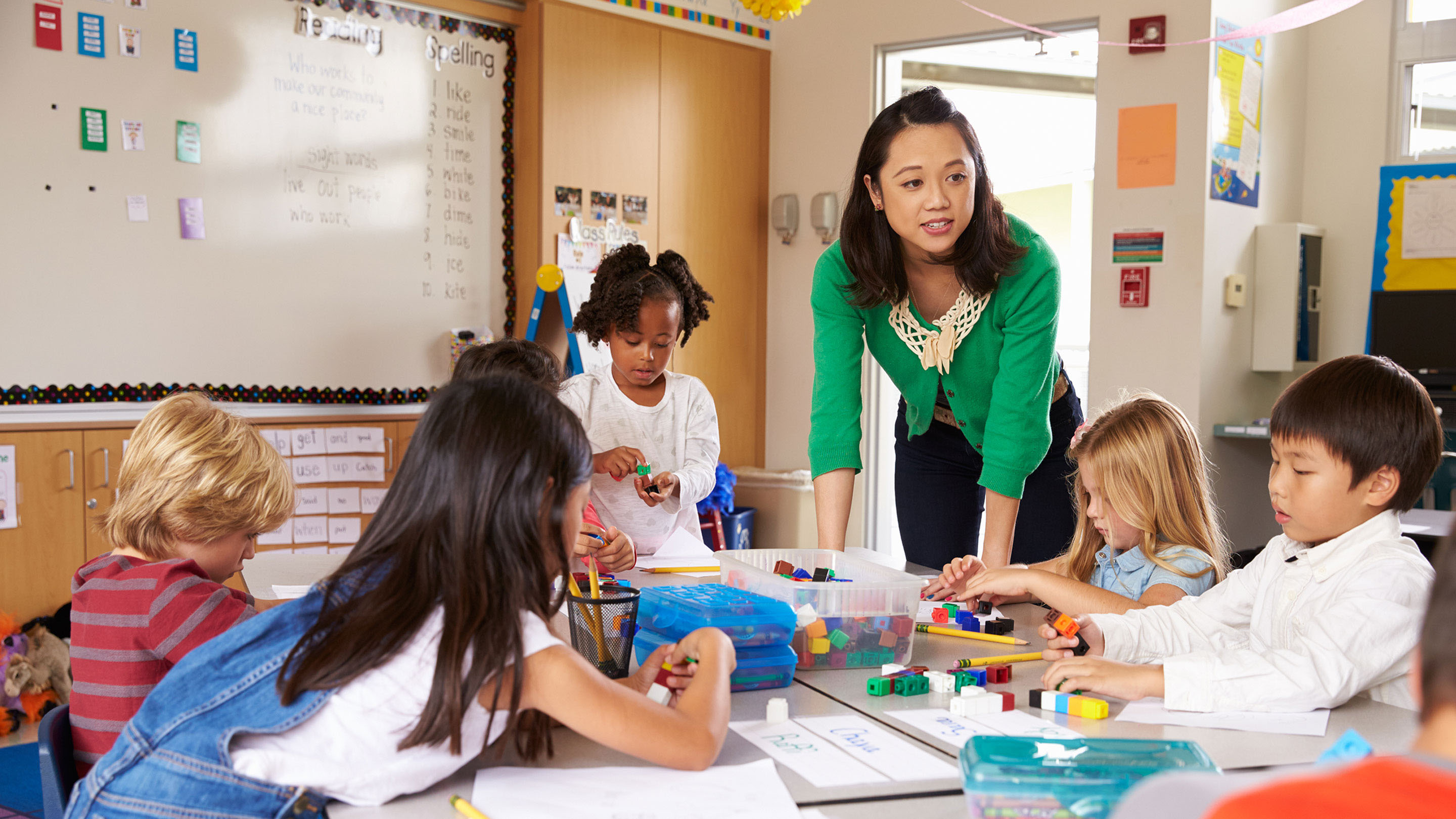Achieve Academic Success with Primary Science Tuition Singapore
Achieve Academic Success with Primary Science Tuition Singapore
Blog Article
A Comprehensive Guide to the Numerous Knowing Approaches in Key Science Instruction
The expedition of varied learning methods in main science direction provides a possibility for instructors to enhance student interaction and comprehension dramatically. By examining hands-on understanding techniques, inquiry-based strategies, and collective techniques, we can identify reliable techniques that deal with different discovering styles. Additionally, the assimilation of innovation and separated guideline plays an important role in promoting a comprehensive atmosphere. Nevertheless, the concern stays: how can these methods be properly carried out in the class to optimize their effect? The answer hinges on a more detailed examination of each technique and its ramifications for teaching scientific research.

Hands-On Discovering Strategies
Hands-on discovering techniques play a critical duty in key science direction, involving pupils in energetic expedition and experimentation. These approaches allow learners to interact directly with materials and phenomena, cultivating a much deeper understanding of clinical principles. By utilizing manipulatives, versions, and real-life experiments, instructors develop a setting where pupils can observe, assume, and examine their concepts.
Such methods not only enhance comprehension however also cultivate vital thinking and problem-solving skills. When pupils join tasks like developing easy equipments, growing seeds, or carrying out chemical reactions, they are encouraged to ask inquiries and look for responses through their very own monitorings. This experiential technique assists to demystify complex clinical principles, making them more relatable and obtainable.
In addition, hands-on discovering promotes cooperation among peers, as trainees typically operate in groups to perform experiments or share findings. This synergy not just enriches their understanding experience however additionally develops important social skills. Inevitably, integrating hands-on strategies in main scientific research direction cultivates a lifelong love of discovering and curiosity concerning the environment, laying a strong structure for future scholastic quests in scientific research and beyond.
Inquiry-Based Understanding
Inquiry-based discovering is an instructional technique that encourages trainees to ask inquiries, examine sensations, and construct their own understanding of clinical concepts. This technique changes the focus from typical teacher-led instruction to a much more student-centered experience, where students take the initiative in their academic trip. By fostering interest, inquiry-based understanding promotes much deeper engagement with the product, allowing trainees to discover topics in a significant context.
In technique, this approach often involves hands-on experiments, observations, and important thinking activities that line up carefully with the clinical approach. Pupils are encouraged to formulate hypotheses, style examinations, and assess data, which cultivates vital abilities such as logical and analytic thinking. The duty of the instructor in this framework is to promote exploration, directing trainees with the query process while encouraging independent thought and collaboration.
Additionally, inquiry-based discovering supports a feeling of ownership over the knowing process, motivating students to pursue knowledge proactively. This method not only boosts understanding of clinical principles however likewise fosters a lifelong love for learning, equipping pupils with the abilities needed to browse a significantly intricate globe.
Collaborative Discovering Approaches
Collective learning approaches encourage trainees to participate in meaningful communications with peers, fostering a common obligation for their educational end results. In primary scientific research instruction, these approaches motivate learners to interact to discover scientific principles, fix problems, and perform experiments (primary science tuition Singapore). By joining team activities, pupils can leverage diverse viewpoints, enabling for richer understanding and retention of scientific understanding
One key element of joint knowing is the focus on communication skills. Pupils have to verbalize their ideas, listen actively to others, and bargain ideas, all of which are essential proficiencies in both scholastic and real-world contexts. This social interaction not just enhances their understanding of clinical concepts but likewise advertises teamwork and conflict resolution skills.
When trainees see the value of their contributions within a team, they are extra most likely to take possession of index their discovering trip. Generally, integrating collaborative knowing strategies in primary science direction grows a dynamic learning environment that prepares trainees for future scholastic and social obstacles.
Technology Combination in Scientific Research
The integration of innovation in key scientific research direction enhances discovering experiences by offering cutting-edge devices and sources that sustain different training approaches, including collective knowing - primary science tuition Singapore. The use of digital systems, simulations, and interactive applications permits students to involve deeply with clinical ideas, promoting an extra hands-on method to knowing
Online research laboratories, for instance, allow learners to carry out experiments securely and efficiently, promoting inquiry-based learning. These devices can simulate real-world clinical scenarios, enabling students to picture complex processes that would certainly be hard to replicate in a traditional classroom setup. Additionally, modern technology cultivates communication and partnership amongst trainees, as they can share searchings for and interact on jobs with on-line platforms.
Furthermore, multimedia discussions and educational videos can enhance lessons by dealing with varied knowing styles, making abstract ideas extra obtainable. Data analysis tools likewise equip pupils to accumulate and interpret scientific data, strengthening critical thinking skills. In general, the calculated incorporation of technology in primary science direction not only improves involvement but also prepares students for a highly advanced society, equipping them with vital abilities for future clinical undertakings.
Distinguished Direction Methods
Separated guideline approaches are essential for addressing the diverse needs of learners in main science education. These techniques enable educators to tailor their teaching approaches to suit varying abilities, interests, and finding out designs within the classroom. By employing distinguished instruction, educators can here are the findings develop a comprehensive atmosphere that fosters engagement and boosts understanding of scientific concepts.
One reliable method is to utilize flexible organizing, which enables students to collaborate with peers at comparable skill degrees or with varying point of views. This technique encourages peer discovering and advertises essential reasoning. Furthermore, using choices in tasks can empower students, permitting them to pick jobs that resonate with their rate of interests while still satisfying curricular objectives.
Moreover, integrating tiered assignments is another beneficial method. Deliberately tasks with varying levels of intricacy, educators can make sure that all students are properly tested, despite their proficiency. Making use of formative evaluations to determine understanding additional makes it possible for teachers to change their educational methods dynamically, making sure that each student receives the support they require.
Inevitably, executing separated instruction techniques in main scientific pop over to this site research education and learning not only improves trainee understanding outcomes however likewise grows a passion for science, preparing trainees for future scholastic searches.

Verdict
In summary, efficient key science direction requires a complex method that includes hands-on understanding, inquiry-based methods, and collective strategies. The integration of innovation and separated guideline further caters to varied understanding designs, fostering an atmosphere helpful to expedition and vital reasoning.
The exploration of diverse learning techniques in main scientific research guideline offers a possibility for educators to enhance student interaction and comprehension substantially.Hands-on discovering methods play a crucial role in main science guideline, involving students in energetic exploration and testing.Inquiry-based knowing is an educational strategy that encourages trainees to ask inquiries, check out sensations, and create their very own understanding of clinical principles.Collective discovering techniques equip students to involve in purposeful communications with peers, promoting a shared responsibility for their educational outcomes. Overall, including collective discovering methods in primary scientific research direction cultivates a dynamic knowing environment that prepares pupils for future academic and social challenges.
Report this page